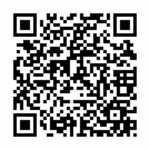
Starting a methodology for a research paper is particularly daunting. Here, we have compiled a set of tips for you 🙂
there are two questions that the methodology section in any research should answer. The first one is how the researcher generates and collects data. The reader should also understand how you analyzed your data. Your writing has to be precise and direct, and you should write it in the past tense.
The best starting point is to understand what research methodology is before you begin to write your text.

How to Write a Good Methodology for a Research Paper?
Start your methodology by listing the questions or problems you want to solve with the help of your research.
After that, state the hypothesis. Write down any assumptions you are to make. Then mention the variables you want to test, distinguishing between dependent and independent variables.
At the same time, there are different kinds of methodologies, including qualitative, quantitative, and mixed methods. Provide a rationale for the selection of your particular approach.
A quantitative approach is suitable when you intend to study social trends. On the other hand, go for a qualitative approach if you plan to evaluate the opinions of people on a certain matter. If you plan to evaluate a social trend together with collecting people’s views, a mixed approach is the most suitable.

Determine the population group to and sample size. There are various formulae for it under different conditions in the academic literature, such as a finite or an infinite population. Consult online research papers to find the relevant formulae. In your draft, just cite the source you take the formula from.
After the sample size has been finalized, develop the survey tool. For qualitative research, it is generally interview questions whereas for quantitative research, it is a questionnaire.
You have the option of conducting a structured or semi-structured interview, but the purpose is to collect data. The way that gives you more detailed information is better. As for the questionnaire, before actually conducting the survey, get it read and understood by different people to see how people perceive the questions. It’s called ‘pilot testing’.
Analyze the interviews word-by-word yourself to infer meanings, draw connections and identify recurring themes. Analyze the quantitative data using software like Excel or SPSS.
Last But Not Least
You can use the outline example of this section for a dissertation but you should take into account that its structure should illustrate the research approach and design of your specific study.
That’s why you should be careful and include only relevant elements into your methodology section.
It should be written like a recipe so that anyone could adopt your techniques and replicate your investigation.
It requires strong analytical and critical thinking skills, dedication, and many hours of reading and writing.
We hope that this article will help you create an impressive methodology section of your project. Good Luck!
Credits: https://bestessay4u.com/methodology-writing




